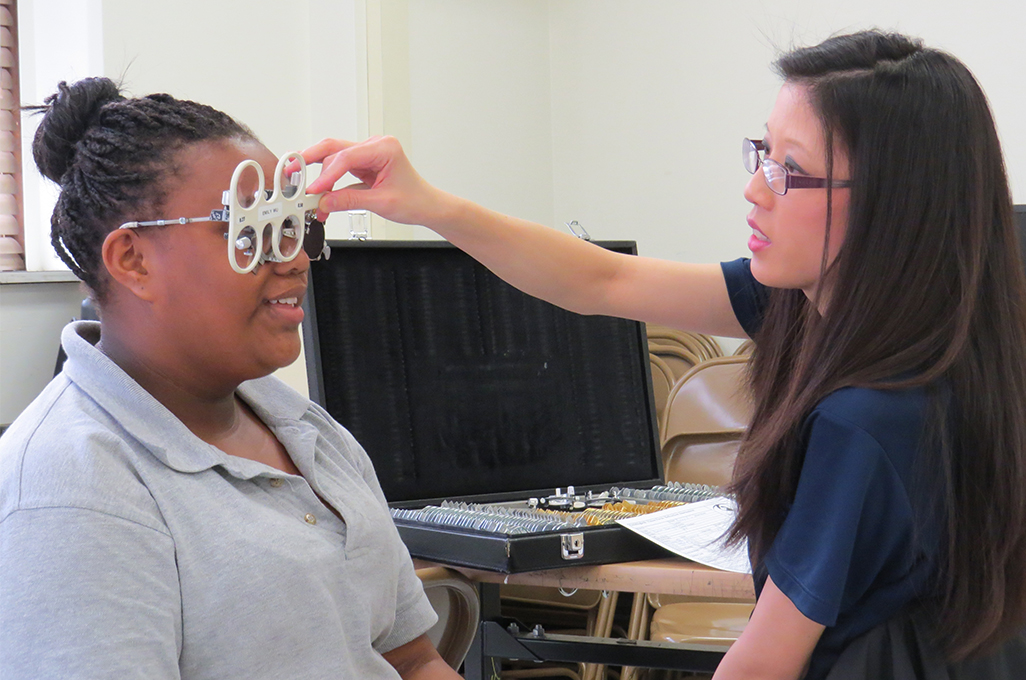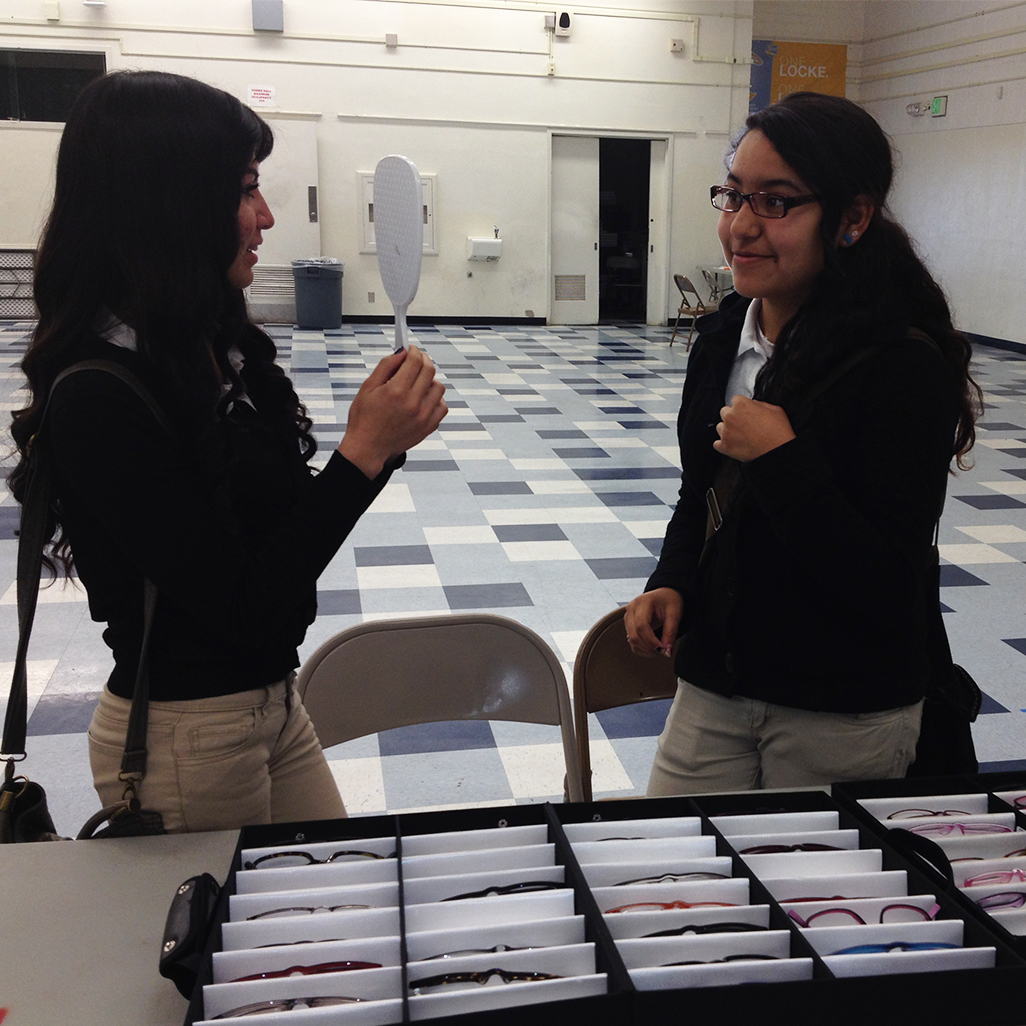Helping Students See a Clear Vision For The Future

In the United States, an overwhelming number of students need glasses, but lack adequate access to vision care. The American Optometric Association says that 25 percent of school aged children have undiagnosed vision problems. To confront this unaddressed barrier to student learning, last year over 300 Green Dot students received free comprehensive eye examinations and eyeglasses. This year, we are well on our way to exceeding that number. For the last six years we’ve prioritized the expansion of our wraparound services, because we can’t help students themselves as future leaders in this world, if one in four of them can’t read the white boards in their classrooms.
Gaps in Care
Across California, schools are mandated to conduct vision screening on all students upon school entry and every third year through eighth grade. Traditionally, if vision problems are identified, a letter is sent home to families recommending a complete eye exam and vision evaluation. “Like most schools, we were telling parents that their kids couldn’t see and we were not providing any direction on what they should do,” said Melissa Pena, Community School Manager at Green Dot. While supporting Locke’s Wellness Center in 2012, Pena found that over 30% of Locke students failed their vision screening. For years, strained eyes and blurred vision affected students’ confidence and negatively impacted their ability to learn.These experiences led to Green Dot investing in additional support and resources that would allow our schools to go beyond the state’s mandate, and provide students with screening, comprehensive eye exams, and glasses. “It’s an important gap we need to fill, because if we don’t, it really doesn’t get filled at all.”
Unseen Barriers
The experiences and voices of our families have largely shaped our approach to vision services. Initially, when students failed the vision exam we would provide families with a voucher for a free comprehensive eye exam and free eyeglasses, however only a third of families redeemed the vouchers. When we followed up with families, three issues repeatedly came up: Workplace inflexibility, transportation, and issues navigating the healthcare system. “There were many barriers to the ultimate goal of getting kids what they needed,” said Pena.

In response to our families experiences, Green Dot began collaborating with Helen Keller international and other partners who specialize in mobile vision services to provide students with vision care during the school day. As a result, more students have received the services and support necessary to develop a clear vision for the future.
“A lot of people don’t understand the extent to which this can be a barrier to learning. I once met a student who said ‘in math class I wasn’t able to see exponents and so I would copy the notes from my friend. Sometimes I’d get in trouble for talking because I didn’t want to tell the teacher I couldn’t see,’” recalled Pena. Stories like these have driven Pena and her team to streamline our wraparound services and increase the number of families we’re serving.
Although there are no screening mandates for high school students, many Green Dot high schools have also invested in bringing vision services to their students. Through these screenings, school leaders at Animo Leadership Charter High School found that 40% of ninth grade students were in need of comprehensive eye exams and glasses.“ We have always tried our best to reach out to students that we may have noticed squinting or unable to see the board from far away, so to be able to provide glasses to nearly half of our freshman class will really help them improve their academic performance,” said Catherine Perez, principal at Animo Leadership. “Our students face so many challenges and have so many barriers that they work hard to overcome, we could never let something like a pair of glasses get in the way of their success.”
Green Dot’s consistent investments in wraparound services and collaboration with partner organizations, has ensured that our schools serve as learning communities where families can receive the resources and support they need.
Learn More About How We Serve All Students
